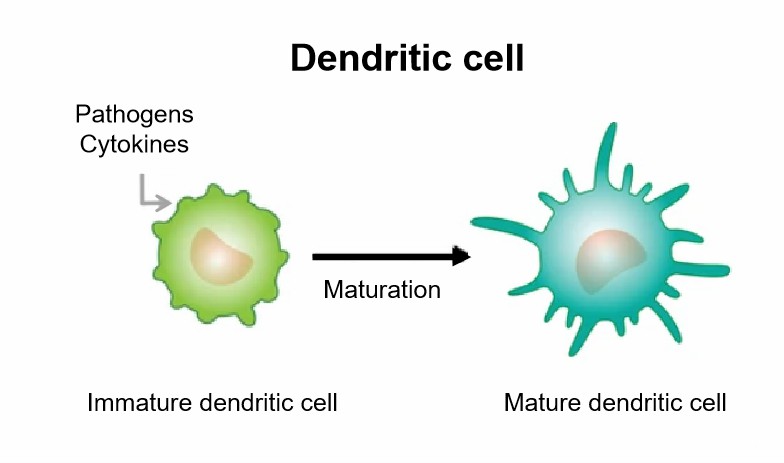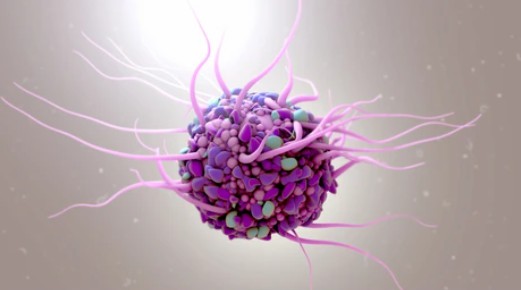Dendritic Cell Pathogen Recognition/Uptake
Available Resources for the Study of Dendritic Cell Pathogen Recognition/Uptake
Our team at Creative BioMart specializes in dendritic cell pathogen recognition/uptake research products and solutions. We have a wide range of recombinant proteins and a team of experts with extensive knowledge and expertise in this field. We are dedicated to providing personalized solutions to meet the specific requirements of each researcher.
In addition to our products, we also offer a comprehensive collection of resources to support your research. These resources include detailed information on the involved pathways, protein functions, interacting proteins, research articles, and other relevant information.
Whether you need diverse products, tailored solutions, or scientific resources, Creative BioMart is your one-stop shop for all your dendritic cell pathogen recognition/uptake-related research needs.
Our Featured Products
- Recombinant Human CLEC1B, GST-tagged
- Recombinant Human CD209 protein, hFc-tagged
- Recombinant Human CLEC4M, Fc tagged
- Recombinant Human CD45 protein, His-tagged
- Active Recombinant Human CD74 protein, His-tagged
- Recombinant Human CLEC7A, His-tagged
- Recombinant Human CLEC4A, His tagged
- Recombinant Human FCGR3B protein, His-tagged
- Recombinant Human LILRB1 protein, His-tagged
- Recombinant Human LILRB3 protein (Met1-Glu443), His-tagged
- Recombinant Human LILRB4, His-tagged
- Recombinant Human CD180 protein, His-tagged
- Recombinant Human CD207, GST-tagged
- Recombinant Mouse Cd209b, His tagged
- Recombinant Human CD47 protein
- Recombinant Human CD93, His-tagged
- Recombinant Human FCGR2C, GST-tagged
- Recombinant Mouse Tlr3, His tagged
- Recombinant Human TLR4, His tagged
If you have any questions, requirements, or cooperation intentions, please feel free to contact us. We very much look forward to working with you and helping you achieve research and commercial success.

About Dendritic Cell Pathogen Recognition/Uptake
Dendritic cells (DCs) play a critical role in the immune system as key antigen-presenting cells (APCs). They are specialized white blood cells derived from bone marrow precursors and are found in various tissues throughout the body, including the skin, mucosal surfaces, and lymphoid organs.
DCs possess an incredibly efficient system for recognizing and taking up pathogens, such as bacteria, viruses, and fungi. When DCs encounter these foreign invaders, they activate a series of intricate mechanisms to identify the pathogens and subsequently initiate an immune response.
- Pathogen recognition by DCs primarily occurs through a variety of pattern recognition receptors (PRRs). These receptors can interact with conserved structures from different microorganisms called pathogen-associated molecular patterns (PAMPs). PAMPs can be present in the form of surface molecules, such as lipopolysaccharides (LPS) in bacteria, or intracellular molecules like viral nucleic acids.
Pathogen Recognition Receptors (PRRs): Dendritic cells express various PRRs that recognize conserved structures on pathogens known as pathogen-associated molecular patterns (PAMPs). These PRRs include Toll-like receptors (TLRs), C-type lectin receptors (CLRs), RIG-I-like receptors (RLRs), and Nod-like receptors (NLRs). Each type of PRR can recognize specific classes of pathogens or their components.- Toll-like Receptors (TLRs): TLRs are a family of PRRs expressed on the surface or within endosomes of dendritic cells. They recognize a wide range of PAMPs, such as bacterial lipopolysaccharides, viral nucleic acids, and fungal cell wall components. Upon binding to their ligands, TLRs initiate intracellular signaling pathways that lead to the production of pro-inflammatory cytokines and the upregulation of co-stimulatory molecules, promoting immune activation.
- C-type Lectin Receptors (CLRs): CLRs are another class of PRRs expressed on dendritic cells. They recognize carbohydrate structures present in pathogens, including fungi, bacteria, and parasites. Examples of CLRs expressed on dendritic cells include Dectin-1, DC-SIGN, and mannose receptors. Engagement of CLRs triggers signaling cascades that lead to phagocytosis, cytokine production, and antigen presentation.
- RIG-I-like Receptors (RLRs) and Nod-like Receptors (NLRs): RLRs and NLRs are intracellular PRRs that detect viral nucleic acids and bacterial components, respectively. RLRs, such as RIG-I and MDA5, recognize viral RNA, while NLRs, such as NOD1 and NOD2, detect bacterial peptidoglycans. Activation of RLRs and NLRs in dendritic cells triggers immune responses, including the production of type I interferons and pro-inflammatory cytokines.
- Upon pathogen recognition, DCs undergo a process known as maturation. Maturation involves the upregulation of surface molecules, such as major histocompatibility complex (MHC) molecules and co-stimulatory molecules (CD80/86), which are crucial for the efficient activation of T lymphocytes.
- After pathogen recognition and maturation, DCs actively take up the pathogens for processing and presentation to T cells. DCs possess several mechanisms for pathogen uptake, including phagocytosis, macropinocytosis, and receptor-mediated endocytosis. These pathways allow DCs to engulf pathogens, break them down into smaller pieces called antigens, and present those antigens on their cell surface using MHC molecules.
In summary, dendritic cells utilize a repertoire of pathogen recognition receptors to sense the presence of pathogens and initiate immune responses. Through the recognition of PAMPs, dendritic cells activate signaling pathways, leading to phagocytosis, endocytosis, antigen processing, and presentation. These processes are essential for the generation of adaptive immune responses and the coordination of the immune system's defense against pathogens.

References:
- Eastman AJ, Osterholzer JJ, Olszewski MA. Role of dendritic cell-pathogen interactions in the immune response to pulmonary cryptococcal infection. Future Microbiol. 2015;10(11):1837-1857. doi:10.2217/fmb.15.92
- Humeniuk P, Dubiela P, Hoffmann-Sommergruber K. Dendritic cells and their role in allergy: Uptake, proteolytic processing and presentation of allergens[J]. International journal of molecular sciences, 2017, 18(7): 1491.


